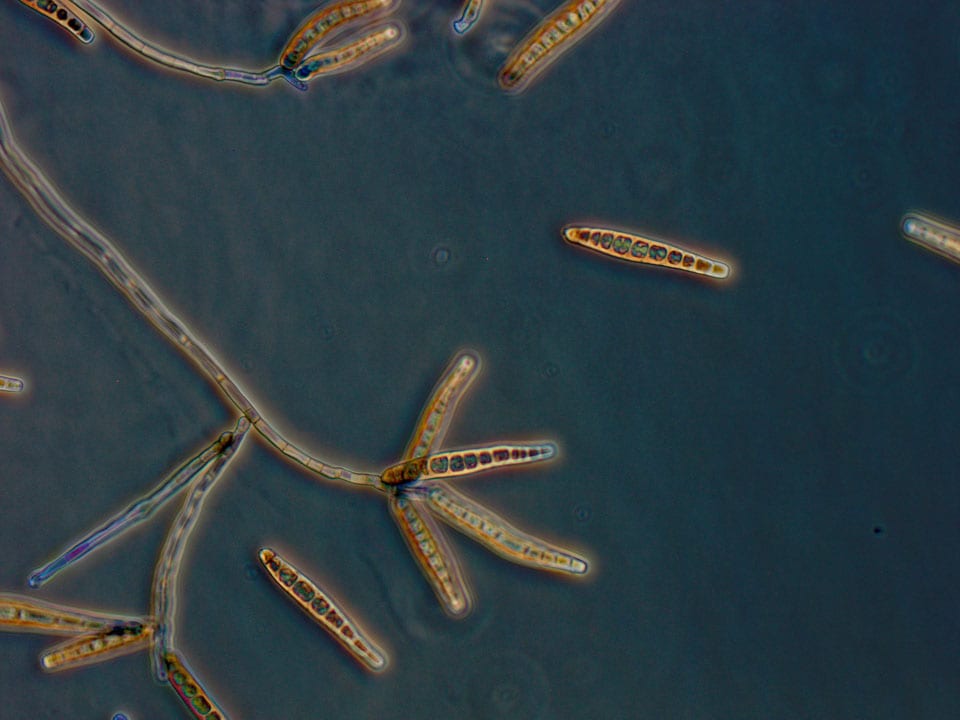Image of Exserohilum

The genus is characterized by its conidia, which are ellipsoidal, distoseptate, and have a protruding and truncate hilum.
Exserohilum spores have an inner cup-like structure which is visible in the basal cell.1
Colonies are grey to blackish-brown, suede-like to floccose in texture, and have an olivaceous black reverse. Conidia are straight, curved or slightly bent, ellipsoidal to fusiform and are formed apically through a pore (poroconidia) on a sympodially elongating geniculate conidiophore. Conidia have a strongly protruding, truncate hilum and the septum above the hilum is usually thickened and dark. The end cells are often paler than the other cells and the walls are often finely roughened. Conidial germination is bipolar. 2
1 American Air Testing [Internet].
2 Mycology online [Internet]. Adelaide: The University of Adelaide; c2012 [updated 2012 Nov 11]. Exserohilum sp.


